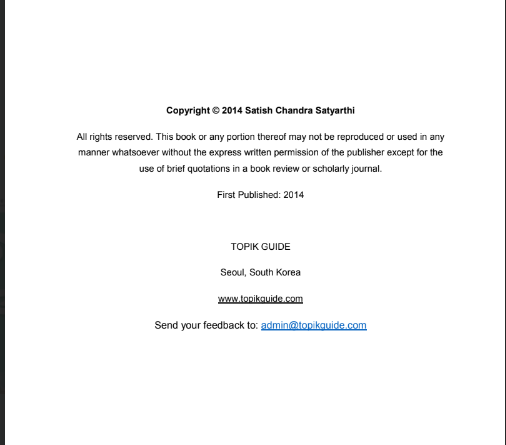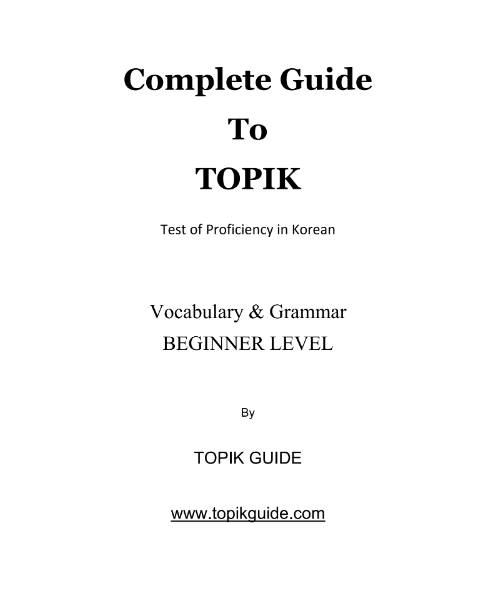


TYPE 1. 아/어/여~계
| Grammar | Explanation | Example Sentence |
| V•아/어/여주다 | To do something for someone | iPhone 사주세요 – Please buy me an iPhone. |
| V•아/어/여드리다 | To do something for someone else (honorific of 아/어/여주다) | 해드릴게요 – I will do it for you. |
| V•아/어/여보다 | It is used to convey meanings such as ‘someone tries doing something (to see how it will turn out) or someone does something to see (how it will turn out).’ | 오늘 낙지를 먹어봄시다. Let’s try eating octopus today. |
| A/V•아/어/여보이다 | It conveys meanings such as likeness, resemblance, or similarity. When attached directly to the stems of adjectives. The past tense form of this pattern is ‘아/어/여보였다’ | 맛있어 보여요. It looks delicious. |
| A/V•아/어/여도 | ‘-도’ is used to express ‘even if, even though’ | 질이 좋아도 비싸요. Even if quality is good but it’s expensive. |
| Grammar | Explanation | Example Sentence |
| A/V•아/어/여도되다 | This pattern is used to ask for and giving permission. A positive reply should be like 아/어/여도되다/좋다/괜찮다. For the negative answer to a request for permission, you have to use the pattern ‘- (으)면안된다.’ ‘May do’ | 들어와도 돼요? May I come in? |
| A/V•아/어/여서 1 | Is used to indicate cause or reason: in declarative and interrogative sentences; cannot be used in imperative and propositive sentence, where another connective ‘-(으)니까’ is used | 아파서 학교에 못가요. I can’t go school because I’m sick. |
| V•아/어/여서 2 | It is used when the subject performs one action and then a second one; it is attached to the first verb and is then followed by a second verb. | 아침에 일어나서 샤워를 해요. I take shower after I wake up in the morning. |
| A/V•아/어/여야되다/하다 | is used to express obligation or necessity: tense is expressed in the verb 하다. ‘Must, have to’ | 매일 학교에 가야 돼요. One should go to school daily. 제가 내일 부산에 가야 해요. I have to go to Busan tomorrow. |
| Grammar | Explanation | Example Sentence |
| V•아/어/여야겠다 | Will have to do something. | 5월 말까지 세금을 내야겠어요. I’ll have to pay taxes by end of May. |
| A/V•아/어/여요 | The informal polite speech style (present tensel | 나는 시장에 가요/갑니다. I’m going to market. 이 책이 좋아요. This book is good. |
| A•아/어/여지다 | To become/get …something (Change is status/degree) | 날씨가 더워져요. The weather is getting hot. 열심히 공부하면 한국어 실력이 좋아질 거예요. If you study hard, your Korean will get better. |
| A/V•았/었/였다 | Past Tense It is used to indicate an action which took place in the past or a condition which used to exist. | 사라 는 어제 고향에 갔어요. Sara went to hometown yesterday. 영화가 재미있었어요. The movie was interesting. |
| Grammar | Explanation | Example Sentence |
| A/V•았/었/였겠다 | This grammar pattern is used to convey supposition, conjecture, a guess a thought or observation about something in the past. It can sometimes be translated as ‘I think’, ‘I bet’, ‘I guess’, ‘It must have been -‘. This pattern cannot be used to express the thoughts or supposition letc) of a second or third person and must express the thought of the person saying or writing it. | 배고팠겠다. You must have been hungry. 우리 는 늦었어. 수업이 끝났겠어. We are late. The class must have been over. |
| A/V•았/었/였으면좋겠다 | It is used to express the speaker’s hope or desire. Even though the past tense -았/었/였- is used, this pattern does not refer to the past. So, even when this pattern is used without the past tense like -(으)면좋겠다, there is no difference in meaning. | 키가 좀 더 컸으면 좋겠어요. I wish I was a little taller. 여행을 갈 수 있었으면 좋겠. It would have been great if I could go on a trip. |
| 이/가 아니다 | Is/am/are not The negative of ‘이다’ | 저는 중국 사람이 아닙니다. I am not Chinese. 이것은 사실이 아니에요. This is not the truth. |
| Grammar | Explanation | Example Sentence |
| 이에요/예요 | The informal polite form of ‘입니다’ | 내 책이에요. This is my book. |
| TYPE 2. -(으)ㄴ~계 | ||
| V•(으)ㄴ 지 (시간) 되다 | This pattern ‘Verb • (으)ㄴ 지 • time word • 되다’ is used to express an interval of time which extends from a definite past to the present. The case marker ‘가’ or ‘는’ can be attached optionally after ‘지’ | 대학교를 졸업한 지 5 년 됐어요. It has been 5 years since I graduated from University. |
| A/V•(으)ㄹ/는/을 것 같다 | It seems/looks/appears like …. N•인 것 같다 – Present A • (으)ㄴ 것 같다 – Present/past A • (으)ㄹ 것 같다 – Future V • (으)ㄴ 것 같다 – past V • 는 것 같다 – Present V • (으)ㄹ 것 같다 – future | 그 사람은 한국인인 것 같아. I think he is Korean. 이게 더 좋은 것 같아요. I think this is better. 비가 오는 것 같아. I guess it’s raining. 곧 도착할 것 같아요. I think I’ll arrive soon. |
| V•(으)ㄴ 후에 | It means ‘after having done something’: used with the action verbs. The tense is expressed in the main (final) verb. | 수업이 끝난 후에 시장에 가자. Let’s go to the market after class. |
| Grammar | Explanation | Example Sentence |
| A/V•(으)ㄹ 거예요 | The informal ending of the future tense ‘-(으)ㄹ 거예요’; with a 3rd person subject it expresses a supposition or presumption, with a 1st person subject – the speaker’s plan or intention | 우리는 오늘 문법을 공부할 거예요. We will study grammar today. 박 대통령은 인 도 방문을 할 거예요. President Park supposes to visit India. |
| A/V•(으)ㄹ 수 있다/없다 | It is used with verbs and indicates ability, capability, possibility or permission | 누가 이것을 할 수 있어요? Who can do this? |
| A/V•(으)ㄹ 줄 알았다/몰랐다 | I didn’t know that ……… | 학교가 이렇게 넓을 줄 몰랐어요. I didn’t know that the school is so big. 돈을 버는 게 이렇게 어려울 줄 몰랐어요. I didn’t know earning money is so difficult. |
| -(으)ㄹ까하다 | I am thinking of doing something…’ | 방학때 여행을 할까 해요. I’m thinking of going on a trip in vacation. |
| -(으)ㄹ래요 | V•(으)ㄹ래요; This grammar pattern has several usages: | 나는 이제 잘래. |
| Grammar | Explanation | Example Sentence |
| -(으)ㄹ래요 | 1. When used with in the first person tense, it is used to expresses the intention or will of the speaker. <br> 2. When used with another subject, it asks for the thoughts and intentions of the listener. This can be a polite way of asking someone if they want to or can do something either with you or for you. However in the case with strangers, elders or people in a higher status position, you should attach the honorific suffix 시 if you are asking them to do something for you, otherwise it can still seem rude leven with a å ending!. See below. | I’m going to sleep now. <br> 내일 영화 보러 갈래요? <br> Do you want to go see a movie tomorrow? <br> 너 죽을래? <br> Do you wanna die? <br> 소주 한 병 더 주실래요? <br> Could I have another bottle of soju? |
| V-(으)러 | It is used to express the purpose of the subject’s action and is followed by either ‘가다'(to go), ‘오다'(to come) or their compounds, or any verb which indicates movement, such as ‘다니다'(to go and come regularly) | 수영하러 갑시다. <br> Let’s go for swimming. |


